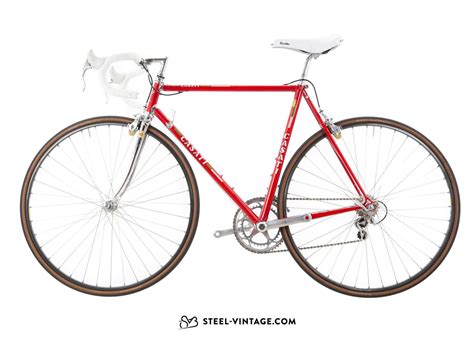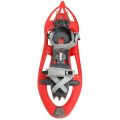Is My Casati Bike Original? A Guide to Spotting Authentic Casati Bikes
Casati bicycles are known for their exquisite craftsmanship, high-quality materials, and elegant designs. They are highly sought-after by cyclists and collectors worldwide, making them a prime target for counterfeiters. If you’re considering purchasing a Casati bike, or you already own one, it’s crucial to be able to identify an authentic Casati bike. In this comprehensive guide, we will explore common questions and help you determine if your Casati bike is genuine.
This guide will provide you with the information you need to determine if your Casati bike is original. We will cover key features, common counterfeiting methods, and resources to help you verify authenticity. Let’s dive into the world of Casati bicycles and learn how to identify genuine ones.
What are the Distinctive Features of a Casati Bike?
Casati bicycles are renowned for their meticulous craftsmanship and use of premium materials. Here are some distinctive features to look for when identifying an authentic Casati bike:
- Frame Construction: Casati frames are typically constructed using high-quality Columbus or Dedacciai tubing, known for their strength, durability, and elegant appearance. The tubing is often butted or triple-butted, meaning that the wall thickness varies along the frame, making it lighter and more responsive.
- Lug Work: Casati bikes often feature intricate lug work, which is a traditional method of joining the frame tubes using brazed lugs. These lugs are usually hand-finished and polished, showcasing a high level of craftsmanship.
- Paint and Finish: Casati bikes are known for their beautiful paint jobs, often featuring custom paint schemes and intricate details. They may also have a high-quality clear coat, adding depth and shine to the paint.
- Components: Casati bikes are usually equipped with top-of-the-line components, such as Campagnolo or Shimano Dura-Ace groupsets, high-quality wheels, and premium saddles.
- Serial Number: Every Casati bike has a unique serial number stamped on the bottom bracket shell or somewhere on the frame. This serial number should be consistent with the Casati bike’s model and year of manufacture.
- Casati Branding: Authentic Casati bikes have the Casati logo prominently displayed on the downtube, seat tube, or head tube. The logo should be clear, sharp, and consistent with the Casati brand identity.
These are some of the key features that distinguish genuine Casati bikes from counterfeits. Let’s now delve into more specific questions and areas to consider when assessing the authenticity of a Casati bike.
How Can I Verify the Authenticity of My Casati Bike?
Verifying the authenticity of your Casati bike can be a challenging task, especially with the prevalence of counterfeit bikes in the market. However, by following these steps, you can increase your confidence in the bike’s genuineness.
- Check the Serial Number: One of the first steps is to examine the serial number stamped on your Casati bike. You can contact Casati directly or consult their website to verify if the serial number matches a bike of that specific model and year of manufacture.
- Inspect the Components: Authentic Casati bikes are equipped with premium components, including groupsets, wheels, and other parts. Examine the components for the brand name, model, and quality. Look for any signs of inconsistency or low-quality materials.
- Examine the Frame Construction: Look closely at the frame construction, including the tubing, lug work, and welding. Observe whether the welds are clean, consistent, and free from defects. Also, ensure the tubing is of the correct type and specification for the bike’s model and year.
- Inspect the Paint and Finish: The paint and finish on an authentic Casati bike should be high-quality and free from blemishes. Look for any signs of uneven paint application, inconsistencies, or poor paint quality.
- Compare with Known Authentic Casati Bikes: If you have access to a known authentic Casati bike, compare the features and details of your bike against the authentic bike. Look for any inconsistencies or discrepancies in the frame construction, components, or other aspects.
By taking these steps, you can significantly increase your chances of verifying the authenticity of your Casati bike. If you have doubts, it’s always recommended to consult with a reputable Casati dealer or bike expert for further verification.
Are Casati Bikes Hand-Made?
Casati bikes are known for their exquisite craftsmanship, and while they are not entirely hand-made, a significant amount of hand-crafting goes into their construction. The frame construction, including the tubing, lug work, and welding, often involves a significant degree of handwork. The use of traditional brazing techniques requires skilled artisans to ensure precise and high-quality joints.
While some aspects of the manufacturing process, such as painting and some component assembly, may be automated, the core frame construction and assembly processes of Casati bikes involve a substantial amount of hand-crafted work. This attention to detail and hand-crafted approach contribute to the bike’s reputation for quality and craftsmanship.
What is the Difference Between a Casati and a Casati Special?
Casati offers different model lines, with the “Casati Special” being one of its flagship models. The Casati Special is typically considered to be a higher-end model, offering more premium components and a more refined build.
Here’s a table highlighting the key differences between a standard Casati bike and a Casati Special:
| Feature | Casati | Casati Special |
|---|---|---|
| Frame Material | Columbus or Dedacciai tubing | Higher-grade Columbus or Dedacciai tubing |
| Lug Work | Hand-finished, polished lugs | More intricate, hand-finished lugs |
| Components | Campagnolo or Shimano groupsets | Top-of-the-line Campagnolo or Shimano groupsets |
| Paint and Finish | Custom paint schemes | More elaborate custom paint schemes, often with metallic finishes |
| Price | High-end pricing | Premium pricing |
The differences between a standard Casati bike and a Casati Special lie in the materials, components, and overall refinement. The Special models reflect a higher level of attention to detail, craftsmanship, and price point.
How Do I Know if My Casati Bike is a Special?
To identify whether your Casati bike is a Special model, look for the following clues:
- Model Name: The model name “Special” should be clearly marked on the bike, usually on the downtube or seat tube.
- Components: Casati Special models are typically equipped with top-of-the-line components, such as Campagnolo Super Record or Shimano Dura-Ace Di2 groupsets.
- Lug Work: Casati Special models often feature more intricate lug work, with greater attention to detail and hand-finishing.
- Paint and Finish: The paint and finish on a Casati Special are often more elaborate, with metallic finishes, custom graphics, and a higher level of polish.
- Price: Casati Special models are priced at a premium compared to standard Casati models.
By checking these features, you can determine if your Casati bike is a Special model. However, the most reliable way to verify authenticity is to contact Casati directly and provide them with the bike’s serial number.
Are There Any Common Counterfeiting Methods for Casati Bikes?
Counterfeiters often try to replicate the distinctive features of Casati bikes to deceive buyers. Here are some common counterfeiting methods to be aware of:
- Imitation Frames: Counterfeiters may use lower-quality materials and manufacturing processes to create frames that resemble Casati bikes. They may use inferior tubing, poorly finished welds, and generic lugs to mimic the look of a Casati frame.
- Fake Components: Counterfeiters may use cheap knockoffs of premium components, such as groupsets, wheels, and saddles, to make their bikes look authentic. They may use generic components and label them as Casati or use counterfeit logos and branding.
- Incorrect Serial Numbers: Counterfeiters may use incorrect or nonexistent serial numbers to make their bikes appear legitimate.
- Poor Paint and Finish: Counterfeit bikes often have poor paint and finish quality, with uneven application, blemishes, and inconsistent colors.
- Low-Quality Assembly: The overall assembly of a counterfeit Casati bike may be poorly done, with loose components, misaligned parts, and an overall lack of attention to detail.
By being aware of these common counterfeiting methods, you can better spot the differences between a genuine Casati bike and a counterfeit. It’s important to examine the bike carefully and look for any signs of inconsistencies or poor workmanship.
Where Can I Buy a Casati Bike?
If you’re interested in purchasing a genuine Casati bike, it’s essential to buy from reputable sources. Here are some recommended places to purchase a Casati bike:
- Authorized Casati Dealers: Authorized Casati dealers are the most reliable source for purchasing a genuine Casati bike. They have direct relationships with the manufacturer and can provide you with a Certificate of Authenticity.
- Reputable Bike Shops: Reputable bike shops often carry a selection of high-end brands, including Casati. Look for bike shops with a strong reputation and a history of selling authentic bicycles.
- Online Marketplaces: While online marketplaces like eBay and Craigslist can be a good source for used bikes, it’s crucial to exercise caution when purchasing a Casati bike online. Look for sellers with positive feedback, clear descriptions, and verifiable authenticity.
Always exercise caution when buying a Casati bike, especially online. Conduct thorough research, ask for detailed information, and verify the seller’s authenticity before making a purchase. A little extra effort can save you from purchasing a counterfeit and ensure you get a genuine Casati bike.
What Should I Do if I Suspect My Casati Bike is Not Original?
If you have doubts about the authenticity of your Casati bike, here are some steps you can take:
- Contact Casati: The best way to verify the authenticity of your Casati bike is to contact the manufacturer directly. Provide them with the bike’s serial number and any other relevant information. They can check their records and confirm the bike’s authenticity.
- Consult with a Bike Expert: If you’re unable to contact Casati or have doubts about the authenticity of their response, seek advice from a reputable bike expert or a specialist in vintage bicycles.
- Consider a Professional Appraisal: A professional appraisal can provide an independent assessment of the bike’s authenticity and market value. Appraisers have the expertise to examine the bike’s construction, components, and other details to determine its genuineness.
If you suspect your Casati bike is a counterfeit, it’s important to act promptly to protect yourself. If you purchased the bike recently, you may be able to return it or seek a refund. It’s also essential to document the situation, such as taking photographs and keeping all communication records.
How Much is a Casati Bike Worth?
The value of a Casati bike varies significantly depending on several factors, including the model, year of manufacture, condition, and components. Casati bikes, particularly those from the Special line and vintage models, can be highly valuable. However, the value can be affected by the bike’s condition, maintenance history, and market demand.
If you’re looking to sell a Casati bike, it’s recommended to contact a reputable bike dealer or collector who specializes in vintage bicycles. They can provide you with a realistic assessment of the bike’s value and connect you with potential buyers.
How Do I Care for My Casati Bike?
Proper care and maintenance are essential to preserve the value and longevity of your Casati bike. Here are some tips for caring for your Casati:
- Regular Cleaning: Regularly clean your Casati bike to remove dirt, grime, and road salt. Use a mild soap and water solution to clean the frame, components, and wheels.
- Lubrication: Lubricate the drivetrain components, including the chain, cassette, and derailleur, regularly. Use a high-quality bike lubricant suitable for the type of riding conditions.
- Inspect for Wear: Regularly inspect the bike for signs of wear and tear, such as worn tires, brake pads, or loose components. Replace or repair worn parts promptly to prevent further damage.
- Storage: Store your Casati bike in a dry and clean environment. Avoid storing it in direct sunlight or extreme temperatures, as this can damage the paint and frame.
By following these care tips, you can ensure your Casati bike remains in optimal condition and continues to provide you with many years of enjoyment.
FAQ
Is there a Casati Bike Registry?
Casati does not have an official public registry for their bikes. However, you can contact Casati directly with your bike’s serial number, and they may be able to provide information about its model, year of manufacture, and authenticity.
Where can I get my Casati Bike Restored?
For Casati bike restoration, you can contact specialized bicycle restoration shops or individuals who specialize in restoring high-end vintage bicycles. These experts have the experience and skills to restore your Casati bike to its original glory.
What is the best way to clean a Casati Bike?
The best way to clean a Casati bike is with a mild soap and water solution. Avoid using harsh chemicals or abrasive cleaners, as these can damage the paint and finish.
How often should I service my Casati Bike?
It’s recommended to service your Casati bike at least once a year, or more often if you ride frequently or in harsh conditions. A bike service includes cleaning, lubrication, and inspecting for wear and tear.
Are Casati Bikes a good investment?
Casati bikes, particularly the Special models and vintage bikes, can be a good investment, as they are highly sought-after by collectors and cyclists. The value of a Casati bike can appreciate over time, especially if it is well-maintained and in good condition.
What are some common Casati Bike models?
Casati has produced many iconic models over the years, some of the most popular include the Casati Special, the Casati Competizione, the Casati Tutto, and the Casati Milano.
Is it worth repairing a damaged Casati Bike?
The decision of whether to repair a damaged Casati bike depends on the extent of the damage, the cost of repairs, and the bike’s overall value. If the damage is significant, it might be more cost-effective to sell the bike as is or for parts. However, if the damage is minor and the bike is a valuable model, it may be worth investing in professional repairs.



